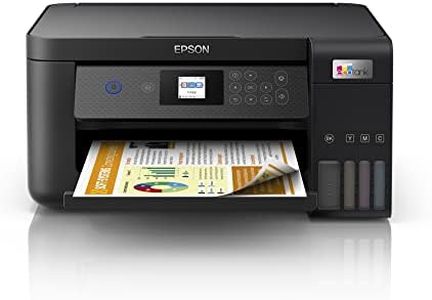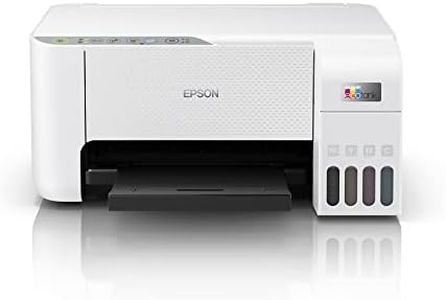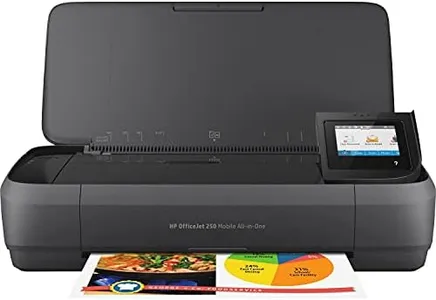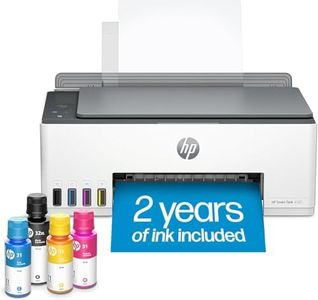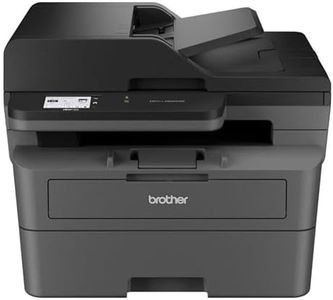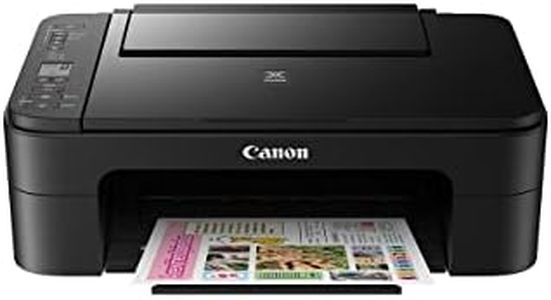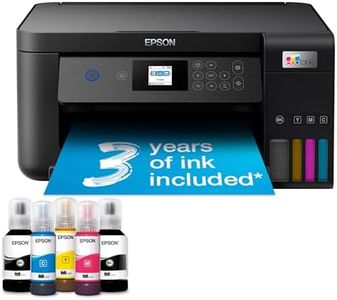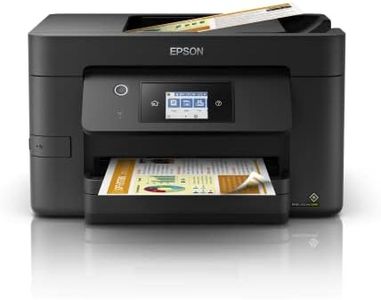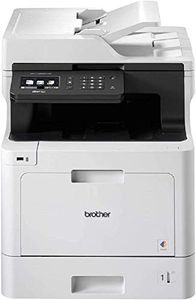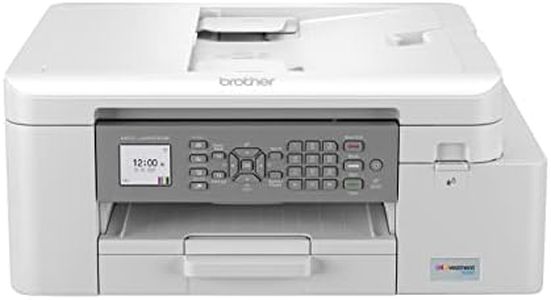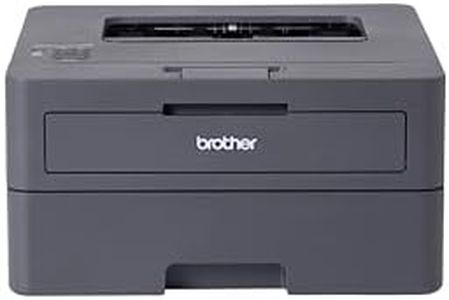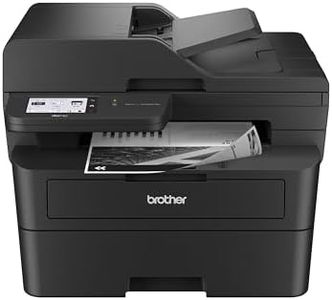We Use CookiesWe use cookies to enhance the security, performance,
functionality and for analytical and promotional activities. By continuing to browse this site you
are agreeing to our privacy policy
10 Best Home Office Printer Scanner
From leading brands and best sellers available on the web.Buying Guide for the Best Home Office Printer Scanner
Choosing a home office printer-scanner can feel overwhelming because there are so many options. The best approach is to first think about how you will use the device: Do you mainly print text documents, photos, or both? How often do you need to scan paperwork, and do you want to scan multiple pages at once? By understanding your daily tasks, you can match the features and performance of a printer-scanner to fit your needs. Paying attention to the key specifications will help you avoid paying for unnecessary features and make sure the device suits your working style.Print TechnologyPrint technology describes the way the machine produces printed documents. Common types are inkjet and laser. Inkjet printers are generally good for printing high-quality color images and are suitable if you sometimes need photos or color graphics. Laser printers are faster for text and handle large volumes of black-and-white documents efficiently, but they can be bulkier. Choose inkjet if you want versatility and sometimes print photos; choose laser if your priority is fast, sharp text documents.
Print SpeedThis tells you how many pages the printer can produce in a minute. If you expect to print large documents or need quick outputs regularly, a higher speed can save you time. Print speed is often measured for black-and-white and color printing separately. Light home offices may be fine with lower speeds (less than 10 pages per minute), while busy setups should look for models offering 15-30 pages per minute or more.
Print ResolutionPrint resolution is how detailed the printed images and text are, measured in dots per inch (DPI). A higher DPI means crisper and more detailed results, which matters if you print photos or graphics. For mostly text documents, a standard resolution is fine (600 x 600 DPI or similar). For occasional photos or design work, look for higher DPI (1200 x 1200 or more) to get better image definition.
Scanner ResolutionScanner resolution also uses DPI and tells you how clear the digital scans will be. High resolution is key for detailed photo or graphics scanning but less necessary for simple document archiving. If you're scanning contracts or receipts, a basic resolution (300 x 300 DPI) will suffice, but if you want to digitize photos or graphics, look for higher resolution (600 x 1200 DPI or more).
Automatic Document Feeder (ADF)ADF refers to the tray that can automatically feed multiple pages for scanning or copying, instead of you placing pages one by one. If you deal with multi-page documents regularly, an ADF can be a major time saver. For mostly occasional, single-page scans, a standard flatbed scanner is enough. Decide on an ADF based on how much batch scanning or copying you expect.
Duplex Printing and ScanningDuplex means the device can print or scan both sides of the page automatically. This is convenient for creating double-sided documents and saves paper. If you often print reports or want to save file space when scanning, duplex is a useful feature. Single-sided tasks don’t require this, so consider if your work often uses double-sided documents.
Connectivity OptionsConnectivity includes how the printer-scanner links to your devices. Common options are USB, Wi-Fi, and sometimes Ethernet. Wi-Fi allows wireless printing from laptops and phones, adding flexibility for a home office. If the device will be shared with others or used from multiple locations in your home, prioritize wireless options. Direct USB is best for a single dedicated computer.
Ink or Toner Costs and YieldThis refers to how much you’ll spend on consumables over time and how many pages each cartridge or toner can produce before needing a replacement. High-yield cartridges usually have a higher upfront cost but can print more pages, resulting in lower long-term costs. Consider models with cost-effective ink or toner if you expect to print frequently, but if you print only occasionally, standard cartridges will suffice.
Size and DesignThe physical size of the printer-scanner determines where you can place it in your workspace. Some models are compact and fit on a small desk, ideal for tight home offices, while others are larger but may offer more functions. Consider your available space and choose a size that fits comfortably without crowding your work area.
